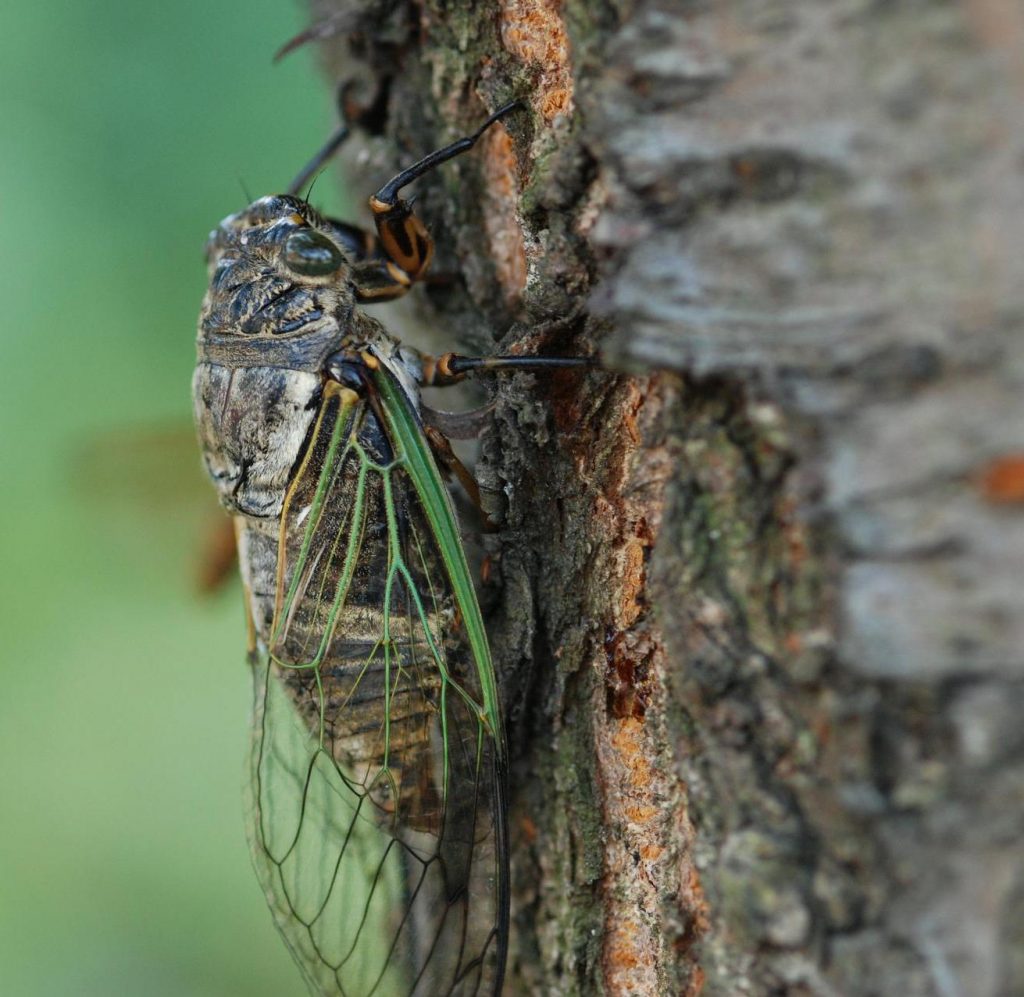Around this time of the year, the woods of River Legacy start producing a very peculiar sound. It is loud and generally described as a high-pitched buzzing sound. The origin of this sound is one of the most intriguing and well-known inhabitants of River Legacy: the cicada. It is quite likely that you have heard this sound before. It forms an integral part of the summer experience in North America. Let’s delve more into cicadas and the sound they produce.

Cicadas are insects that belong to the order Hemiptera, a very big and diverse order of insects known collectively as the “true bugs and relatives.” This makes cicadas distant relatives to insects such as aphids, stink bugs, shield bugs, leafhoppers, and bed bugs–yes, those bed bugs! There are roughly 3,000 species of cicadas and they inhabit every continent except Antarctica. In North America, there are about 200 species of cicadas. The most common species of cicadas belong to the genera Tibicen, Megatibicen, Hadoa, and Diceroprocta and are known as the dog-day cicadas. These are considered to be annual cicadas.
This means that they have a life cycle that lasts anywhere from 2 to 5 years, in general. On the other hand, species belonging to the genus Magicicada are known as the periodic cicadas, because their life cycle is very different from the others. These cicadas have either a 13-year or 17-year life cycle, so broods can remain underground for years until it is time for them to emerge. The vast majority of these cicadas can be found east of the Mississippi River. Most of the cicadas in Texas are annual cicadas though there are some members of Magicicada found in counties along the Red River, bordering Oklahoma.
The cicada sound is essentially a mating call produced by the males in order to attract a female cicada. The sound can also be used to announce an individual’s territory. The origin of this sound can be traced back to a special organ that few insects have: the tymbal organ. The male cicadas possess 2 of these, which are circle-shaped ridged membranes found on the back and side of the 1st abdominal segment of the cicada. The muscle that attaches to the tymbals contracts and bends the tymbals, which creates a clicking sound. When the muscle relaxes, they go back to their previous form. The tymbals contract so frequently (120 to 480 times a second) that it appears as a long, continuous sound to the human ear. There are air sacs in Cicadas that amplify the sound to produce the iconic cicada buzzing sound!
Cicadas are very special insects with an amazing adaptation that has made them world famous. As you take a walk through the River Legacy this summer, remember how the cicada sounds are being made as they graciously cover the woods.
Sources:
- Bauer, Patricia. “Why are cicadas so noisy?”. Encyclopedia Britannica, Invalid Date, https://www.britannica.com/story/why-are-cicadas-so-noisy. Accessed 9 May 2022.
- Evans, Arthur. Field Guide to Insects and Spiders of North America. 1st ed., New York, Sterling Publishing Company, 2008.
- Abbott, John, and Kendra Abbott. Common Insects of Texas and Surrounding States: A Field Guide. 1st ed., Austin, University of Texas Press, 2020.
- Drees, Bastiaan, and John Jackman. A Field Guide to Common Texas Insects. 1st ed., Houston, Gulf Publishing Company, 1998.
- Liebhold, A. M., Bohne, M. J., and R. L. Lilja. 2013. Active Periodical Cicada Broods of the United States. USDA Forest Service Northern Research Station, Northeastern Area State and Private Forestry.
